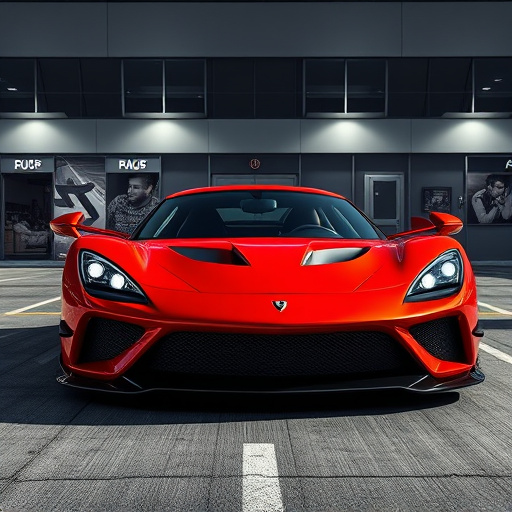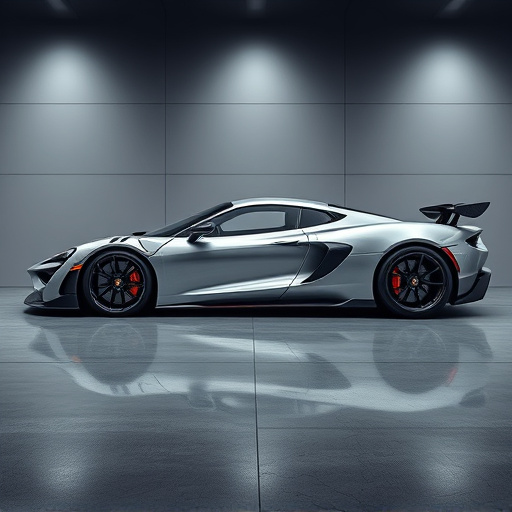Supercharger Compatible Intakes (SCI) leverage forced-induction technology to boost vehicle performance, optimizing airflow for efficient combustion and increased horsepower. By employing advanced engineering, specialized materials, and precise tuning, SCI minimize turbulence and maximize cool air intake, ensuring optimal engine operation at elevated temperatures. This results in noticeable performance gains for car enthusiasts while maintaining reliable system effectiveness in supercharged vehicles.
In the realm of automotive performance, heat management is a critical yet often overlooked aspect, especially for vehicles equipped with superchargers. This article delves into the intricate world of supercharger compatible intakes and forced-induction, exploring their pivotal roles in maintaining optimal temperatures. We’ll dissect the design principles behind efficient heat dissipation systems tailored for supercharged machines, ensuring both peak performance and engine longevity. By understanding these concepts, folks can foster a more nuanced approach to revolutionizing their vehicles’ capabilities.
- Understanding Supercharger Compatible Intakes
- The Role of Forced-Induction in Heat Management
- Designing Efficient Heat Dissipation Systems for Supercharged Vehicles
Understanding Supercharger Compatible Intakes

Supercharger Compatible Intakes are designed for vehicles equipped with superchargers or turbochargers, enhancing the forced-induction system’s performance. These intakes play a crucial role in optimizing airflow to the engine, ensuring efficient combustion and increased horsepower. By carefully managing the intake of cool, dense air, these designs can significantly boost an vehicle’s power output.
The key to their effectiveness lies in specialized materials, advanced engineering, and precise tuning. Supercharger intakes often incorporate components like cold-air intakes, high-flow filters, and optimized tubes to reduce turbulence and restrictions. This allows for a smoother, more efficient flow of air, maximizing the potential of forced-induction systems and delivering a noticeable performance gain to car enthusiasts seeking that extra push.
The Role of Forced-Induction in Heat Management

In the realm of heat management intake designs, forced-induction plays a pivotal role in enhancing engine performance and efficiency. Supercharger compatible intakes, powered by forced-induction, offer a game-changing solution for automotive enthusiasts seeking both power and control. This advanced technology forces additional air into the engine, enabling a larger volume of cool air to be drawn in, thereby improving heat dissipation and overall thermal management.
Unlike natural intake systems that rely on atmospheric pressure, supercharger compatible intakes utilize a mechanical compressor or turbine to boost airflow. This process not only increases the amount of air entering the combustion chamber but also raises the air density, resulting in improved fuel-air mixing and more efficient burning. As a result, engines equipped with forced-induction systems can produce higher horsepower and torque outputs while maintaining optimal operating temperatures.
Designing Efficient Heat Dissipation Systems for Supercharged Vehicles

In the realm of automotive engineering, designing efficient heat dissipation systems for supercharged vehicles is paramount. Supercharger compatible intakes and forced-induction technologies significantly enhance engine performance but come with elevated thermal demands. Effective cooling strategies are crucial to prevent overheating, maintain optimal operating temperatures, and ensure longevity of high-performance components.
Engineers must consider factors like heat flux, material choices, and strategic placement of cooling elements within the intake design. Advanced materials that offer excellent thermal conductivity and resistance to extreme temperatures play a vital role. Additionally, streamlining airflow while minimizing turbulence helps maximize cool air intake and efficient heat dissipation, making forced-induction systems more effective and reliable in supercharged vehicles.
Supercharger compatible intakes, powered by forced-induction, play a pivotal role in managing heat in high-performance vehicles. By designing efficient heat dissipation systems, we can optimize engine cooling and enhance overall vehicle performance. This strategic approach ensures that the forced-induction system not only boosts power but also maintains optimal operating temperatures, making it crucial for supercharged vehicles to reach their full potential.














